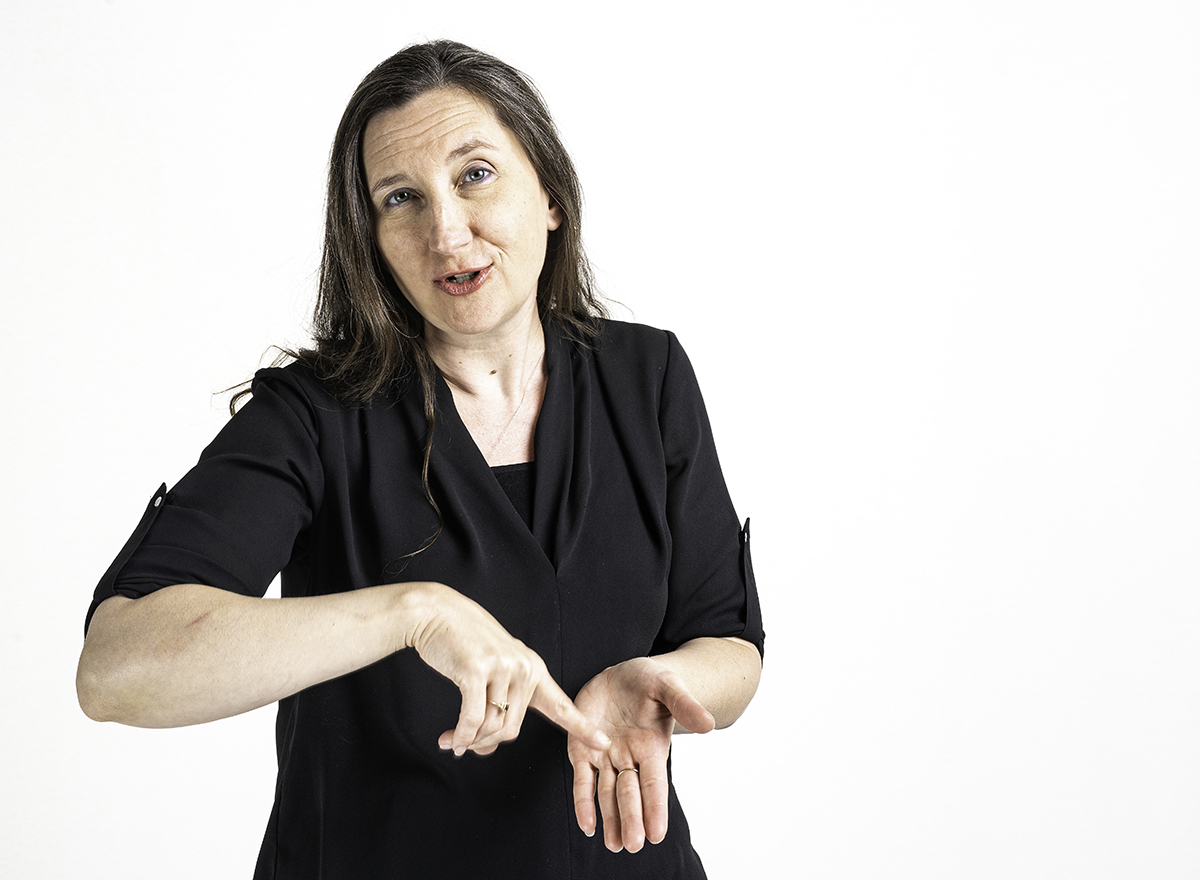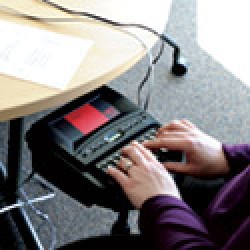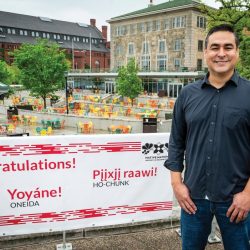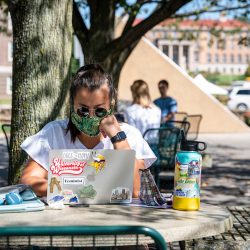American Sign Language in the Classroom
Amy Free ’96 promotes equity as an interpreter across campus.

Free’s work as a sign language interpreter sometimes requires challenging misconceptions about deaf students.
For two decades, Amy Free ’96 has worked as an interpreter for deaf and hard-of-hearing UW–Madison students in lecture halls, science labs, and — for the last year — the virtual learning space. As a sign language interpreter with the McBurney Disability Resource Center, she has also been part of commencement ceremonies and presidential visits. Free studied zoology and conservation biology as an undergraduate and trained to be an interpreter at UW–Milwaukee before happily returning to her alma mater. Her job sometimes requires her to challenge misconceptions about American Sign Language (ASL) and the students she works with.
What drew you to this job?
I had interest in sign language starting in grade school. And I don’t really know why other than I knew of Linda Bove from Sesame Street. I always give her credit. A lot of people come to interpreting because there was a deaf neighbor, friend, or family member. For me it was just loving languages and wanting to work with language.
How accommodating are classes to deaf and hard-of-hearing students?
It’s been almost a generation that I’ve worked at McBurney, and there has been increasing awareness [across campus]. Staff reach out to each instructor before the semester begins to [say], “Please caption all of your media so that it’s accessible to the student with hearing loss and make sure that the interpreter has access to [course materials].” I think that has done a lot in terms of just getting instructors to have it in the back of their minds and not be surprised on the first day.
Is there a favorite class that you’ve interpreted for?
In the horticulture department, there is a class taught by Jim Nienhuis PhD’82 and Irwin Goldman PhD’91 about world vegetables. The two of them are totally fun. It’s like interpreting a comedy show, plus all of the content is amazing and interesting.
What do you wish people understood about your job?
English is a very linear language, but ASL is a spatial language. Let’s say the lesson is about government or power dynamics between groups of people: we have to set those entities in specific spaces to show their relationship and any dynamism. We can then manipulate that space and show, “Now these people took over.” So we have to be cognizant of how to show things in a 3D depiction, which is where a lot of the mental work comes in. People are always like, “Oh, it’s so beautiful what you’re doing.” And I tell people it’s kind of like saying, “That term paper you turned in had really nice margins.”
What misconceptions do people have about the students you work with?
Sometimes there’s an assumption by instructors that [the students] can’t participate, like when we’re doing introductions and the deaf person is put last or even bypassed. That is really heartbreaking and just so wrong. Occasionally, there’s the idea that as the interpreter we will be that student’s partner. We don’t do that. We’re not participants in the class. … Students who use ASL as their primary language are very similar to international students who are now in a learning environment that is in their second language. I don’t think that’s appreciated that much on campus. It probably goes back to the idea of, Oh, sign language is just English. It’s not. The grammars are completely different.
Published in the Summer 2021 issue



Comments
No comments posted yet.